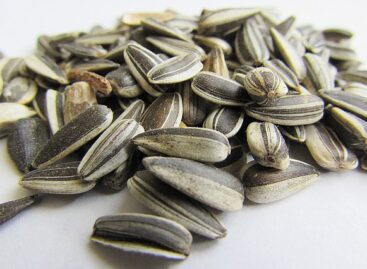In Europe, there is a significant lack of precipitation, which can cause problems in agriculture in the spring
Until the middle of February, Europe was characterized by a significant lack of precipitation in many places, which could cause problems in the spring, when plants start to develop and need more moisture, the National Meteorological Service wrote in its international agrometeorological analysis on Wednesday.

(Photo: Pixabay)
According to the report, the period between January 1 and February 17 in Europe was characterized by a significant lack of precipitation in many places. Rainfall was up to 50 percent less than average in some parts of the Iberian Peninsula, southern France, northwestern Italy and Germany. There is also a lack of rainfall in the Black Sea region, just like in Turkey, especially in its western part. In Ukraine and in the central and southern areas of the European territory of Russia, the lack of precipitation is typical. The problem may appear in the spring, when the plants begin to develop and need more moisture, they wrote. They added: the northern areas are also “facing” a lack of snow, as a result of which there may not be enough water for irrigation in spring and summer. On the other hand, the precipitation in the Carpathian Basin, Croatia and Slovenia exceeded the average amount by more than 50 percent.
Overall, the winter in Europe was milder than average, the number of cold days was much less than usual.
During this period, the weather was 2-4 degrees Celsius milder than average in the Netherlands, Germany, Central Europe, Romania, Bulgaria, most of Eastern Europe, Scandinavia and eastern Turkey. In some places, the temperature exceeded the many-year average during this period by 4-6, and in some places even by 6-8 degrees. The biggest difference was in the northern areas of the European part of Russia, where this part of the winter was eight degrees milder than average. On the other hand, the weather was slightly cooler than average – 0.5-2 degrees Celsius below the many-year average – in the Iberian Peninsula, southwestern France, southern Italy and southwestern Turkey, as well as the eastern region of the European territory of Russia.
The situation is no better on the other continents
In the analysis, it was written: a series of tornadoes swept through the United States of America from Louisiana to West Florida, and rainfall of around 100 millimeters or more fell in several places in the second week of February, mainly in the southeastern states, as well as from northeastern Texas to Arkansas, and on the northwestern coast. However, the rest of the country remained largely dry. The harsh cold was pushed back mainly to the mountainous areas in mid-February, the usual or milder weather prevailed in most of the states, the weather was especially mild in the northern and northeastern areas, North Dakota and the Great Lakes region. In Australia, the dry, sunny, warm weather in the southern part of Queensland helps the ripening and harvesting of early-sown sorghum, but at the same time, due to significant evaporation, the moisture content of the soils is constantly decreasing and the summer plants that are still developing need to be watered more and more. Overall, the main agricultural crops are still in good or excellent condition in the eastern production areas of Australia, this year’s wheat harvest is estimated at 38 million tons, which is a record high value, and 5 percent more than last year’s wheat harvest, which was also a record. In South Africa, wet but mostly mild weather in the eastern half of the country continued to provide good prospects for maize and other non-irrigated summer crops. In Argentina, the January drought continued in the first half of February with ever-increasing temperatures, and the expected yields of summer crops that are still developing are decreasing. In most of the most important agricultural areas, very little or no precipitation fell, and daytime temperatures reached 40 degrees, which only increased the effects of the drought. In Brazil, even in the first half of February, dry, hot weather in the southern agricultural areas of the country caused significant stress for the summer crops that were still developing. Precipitation arrived in the northern production areas, and from the middle of the month, the rainy weather spread to the southern landscapes as well. The heavy rains caused severe flooding in the southeastern part of the country.
MTI
Related news
The Ministry of Agriculture has issued a notice on the use of ENAR data in support policy
In the case of animal-based subsidies financed from EU funds,…
Read more >Farmer-centric agricultural policy after 2027 receives unanimous support
The EU member states’ agriculture ministers have adopted Council conclusions…
Read more >Slow but steady growth in sunflower producer prices
Oil World experts expect a global sunflower seed harvest of…
Read more >Related news
Most major grocery chains will keep their stores open until noon on December 24th
Most of the large grocery chains will keep their stores…
Read more >Recognition of Consumer Protection Excellence: Honoring the Best of 2024
This year’s outstanding consumer protection officers and special award recipients…
Read more >The Joy of Giving! – SPAR stores collect non-perishable food for people in need
The Hungarian Maltese Charity Service and SPAR Hungary have launched…
Read more >








